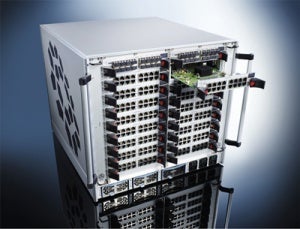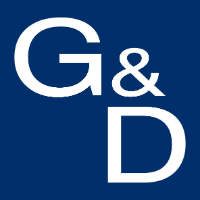
There’s a huge market for professional AV solutions. But what role does KVM technology play within it? How does it relieve the work of users and IT personnel? These are the main aspects, Guntermann & Drunck will focus on at the upcoming ISE trade show in Amsterdam.
Integrated Systems Europe is the world’s best-attended tradeshow for professional AV system integration. It is a marketplace focussing on business, network, education and technological innovation. Hardly any IT division has as many facets as the audio-video industry. End customers looking for solutions tailored to their individual media contents might easily get lost in the jungle of products available on the market.
KVM in control rooms and digital signage applications
Audio-video installations demand reliable and available computers. Running and monitoring media content and processes requires many computers. Many computers, however, strain the working environment of people operating them. The employees are not only affected by heat, fan noises or limited space but also by the IT staff maintaining the devices.
KVM equipment makes it easy to separate humans and technology. Computers are moved into separate equipment rooms. From here, KVM extender systems forward the video signal to different user monitors and large screen projections, or keyboard, video, mouse as well as other signals are forwarded to the control workstation.
Combining extenders with KVM switches additionally reduces the number of monitors required at workstations, but still allows users to access an almost infinite number of computers. All of this is possible through a KVM matrix, a combination of extender and switch.
Advantages of applying KVM
KVM devices can be easily installed via plug-and-play. On top of that, KVM products use the existing cable infrastructure. The result of KVM transmission: crystal-clear images. Even though computers are removed from workstations, they work without any network or any loss of quality or keyboard/mouse latencies, thus benefitting the user’s hand-eye coordination. Thanks to KVM, the service team is also able to maintain any devices stored in the equipment room where they can access the computers without disturbing the employees working in the control room.
Taking a closer look at KVM
In times of acronyms, the term KVM doesn’t describe a trademark, a certain product or a company but a technology. The abbreviation stands for keyboard, video and mouse, the three computer signals that are extended, switched or multiplied with the help of KVM products. With increasing demands and functional ranges, other signals such as bidirectional audio, RS232, USB transparent and management functions have been added over the years. In addition, the V in KVM, the video component, has gained a variety of facets. Since Guntermann & Drunck was founded, the German manufacturer focuses on distributing, extending and switching these signals.
At G&D, customers can select and combine KVM equipment fitting their requirements and use it with their existing cable infrastructure. Thus, standard equipment adapts with individual demands without the necessity of a customised solution to transmit and/or extend signals.
What AV integrators have to provide
To manage such a versatile product portfolio yet still be able to provide tailored solutions off the shelf, the AV sector requires highly qualified consulting and service. Employees must have wide-ranging basic IT knowledge as well as profound expertise. Integrators are not just there to consult, but to provide help with installing and maintaining the system.
To meet all of these requirements, Guntermann & Drunck works with a network of partners who are able to provide top-notch service. Visitors, customers, people who are looking for help with their installations as well as committed integrators are welcome to visit G&D at stand 10-R116 when the AV industry will meet at ISE in Amsterdam, 4-6 February 2014. Anyone who interested in visiting G&D at ISE can get their free ticket at www.gdsys.de/en/events/.

